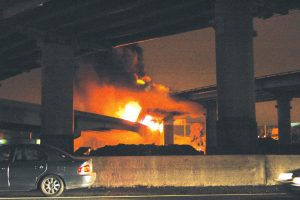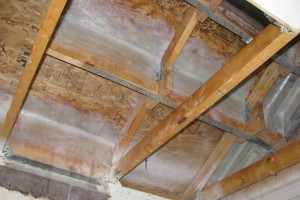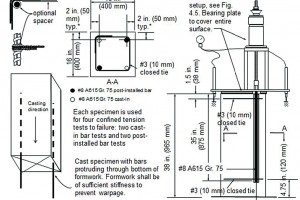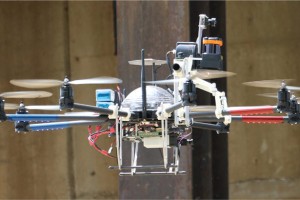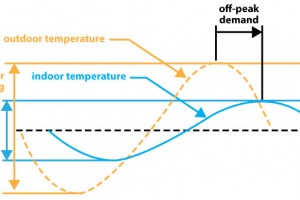Recent events have repeatedly reminded the engineering community that our transportation infrastructure is susceptible to fire from crashed or overturned vehicles, especially from trucks carrying flammable cargo. Despite these hazards, most bridges in the U.S. are designed and maintained with little, if any, consideration for fire resistance. With approximately 600,000 bridges currently in use in the U.S., fire has caused bridge failures at a rate consistent with other hazards to which engineers dedicate significant amounts of time and money to mitigate. …
Review Category : InSights
Seismic Retrofit of Masonry Structures with Wood Diaphragms
Fiber Reinforced Polymers (FRPs) have been used for seismic retrofit applications in masonry and concrete structures for many years. FRP has also been used for general restoration purposes in wood structures. Examples include repair and strengthening of wood columns or posts by wrapping with FRP and strengthening of wood beams by either wrapping beams with FRP or by placing FRP of the sides or bottom of wood beams. …
America is a nation built by immigrants. The United States accepts approximately 1,000,000 legal immigrants per year. The U.S. is the most welcoming of all countries and a primary destination for foreign migrants, more than the other top five industrialized nations’ immigration rates combined (Germany, United Kingdom, France, Canada, and Switzerland). …
The concept of “design-assist,” and what makes it a success, is often a mystery in the construction industry. Some already have a strong opinion about this project delivery system based on prior experience; others may have no experience at all. With that understanding, this article offers insight into the characteristics and keys to a successful design-assist project from the singular perspective of a steel fabricator with design-assist experience. …
Reinforcing Bar Development Length using the Provisions of ACI 318
A key aspect of reinforced concrete design is the calculation of the required reinforcing area and the required development and splice lengths for proper reinforcement details. In most structures, the reinforcement is cast with the concrete and subsequent concrete pours, i.e. “new” concrete, is placed around the cast-in-place reinforcement protruding from the existing concrete. …
The Effects of Base Material Temperature during Installation and In-Service Use
Post-installed adhesive anchor systems have been used for many years for the attachment of threaded rods and reinforcing bars to concrete and other masonry base materials. The code that governs the design of adhesive anchor systems is the American Concrete Institute’s ACI 318-14, Building Code Requirements for Structural Concrete, Chapter 17 “Anchoring to Concrete.” The test reference is ACI 355.4, Qualification of Post-Installed Adhesive Anchors in Concrete. …
Humans and Drones Must Work Together
The increased use of drone technology over the last several years has had a positive impact on the field of civil engineering. Drone-based sensing technologies enable engineers to inspect large-scale infrastructure systems faster, and from angles that were previously inaccessible. Drones equipped with reality capture technologies, such as cameras and scanners, promise to be an effective apprentice to inspectors and engineers. These “assistants” will be collecting spatial data about large infrastructure systems at the resolution needed to give engineers a complete picture of infrastructure conditions during both construction and inspection. …
Energy efficiency continues to weave itself into the expectation of building design. Building trades, including Mechanical, Electrical, Plumbing, and Structural Engineers, are having to modify their general practices. The new requirements of building codes, namely energy codes, are subsequently forcing age-old structural detailing into a new realm. …
Confirming Your Intentions and the Interpretation by Others
There are three aspects of field Quality Assurance for construction projects: Inspection by the Building Official, Special Inspection by the owner’s special inspection agency, and Structural Observation performed by the Engineer of Record (EOR) or his/her designee. All three of these functions are important and non-redundant. As the scale and complexity of a project increases, the more important it becomes that all three functions are provided. …
Traditionally, tornados have been overlooked in structural design in favor of more predictable straight-line winds. Indeed, all of the design wind speeds presented in ASCE 7 are based on either surface data analysis of thunderstorms and synoptic storms, or Monte Carlo simulations of hurricanes. …

